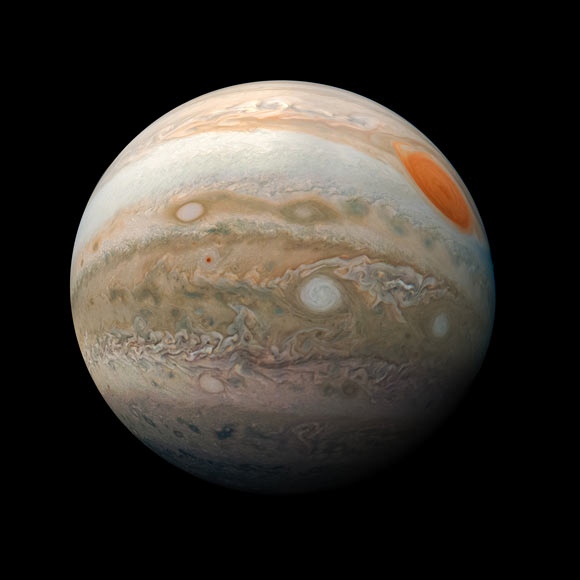
Last year, researchers from the Carnegie Institution for Science announced they had discovered 12 new moons in orbit around Jupiter. Jupiter is blessed with an abundance of moons, and these new discoveries brought the total number to 79. In order to name these newly-discovered bodies, Carnegie Science turned to the public for suggestions, and now it has announced the new names for five of the moons.
There will be no naming the moons Moony McMoonface, however. Astronomers have a strict naming scheme when it comes to Jupiter’s moons that the researchers wanted to respect.
“There are many rules when it comes to how we name moons,” Carnegie’s Scott Sheppard, leader of the team who discovered the new moons, explained in a statement. “Most notably, Jovian naming conventions require its many moons to be named after characters from Greek and Roman mythology who were either descendants or consorts of Zeus or Jupiter.”

The names were gathered from suggestions on Twitter under the hashtag #NameJupitersMoons and were passed on to the International Astronomical Union for approval. The approved names are as follows:
S/2017 J4 is now Pandia, daughter of Zeus and the Moon goddess Selene. She is the goddess of the full moon, making her the ideal choice for naming a lunar body.
S/2018 J1 is now Ersa, appropriately enough the sister of Pandia and the goddess of dew.
S/2003 J5 is now Eirene, daughter of Zeus and Themis and the goddess of peace.
S/2003 J15 is now Philophrosyne, granddaughter of Zeus and sister of Eupheme, who is the spirit of welcome and kindness.
S/2003 J3 is now Eupheme, granddaughter of Zeus and sister of Philophrosyne, who is the spirit of praise and good omen.
Overall, the researchers are delighted with the creativity and engagement of the public in this naming process, and happy with the final names that were chosen. “I was blown away by the enthusiastic response for this contest,” Sheppard said. “I hope the thought of these moons let everyone ponder the wonder and amazement that is our universe.”
Editors' Recommendations
- NASA offers the chance to ‘fly your name around the moon’
- NASA’s Juno spacecraft captures cool images of Jupiter’s huge moon
- Amateur astronomer discovers a brand new spot on Jupiter
- NASA asks for the public’s help to design a robot for digging on the moon
- NASA discovers water vapor — and maybe more — on Jupiter’s moon Europa




